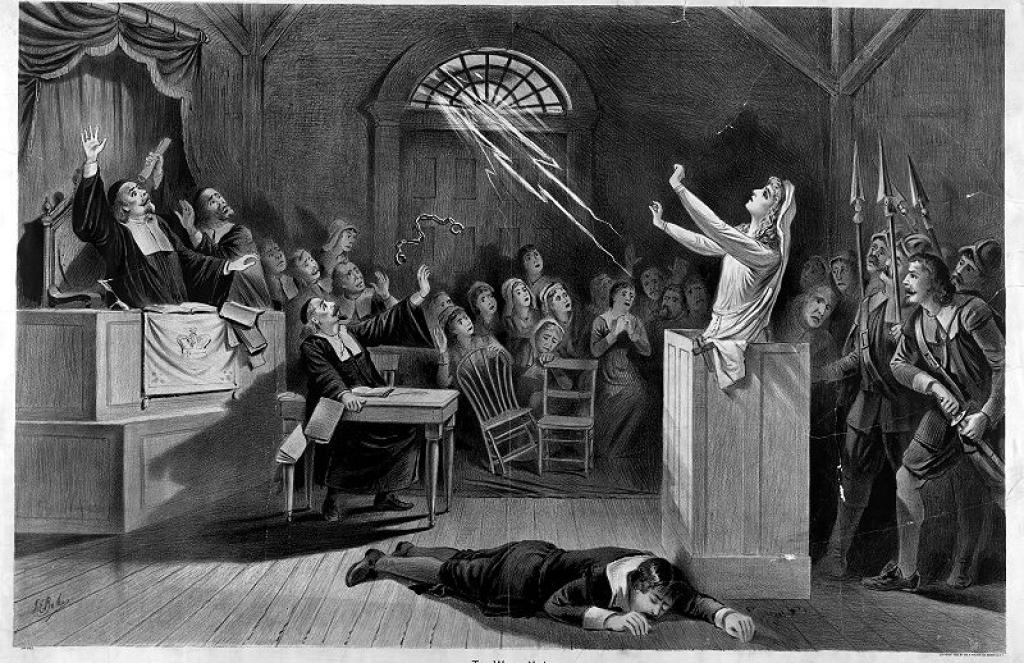Thessaloniki gets ready for its metro launch in November
The underground rapid transit lines have been under construction for almost two decades due to various project delays
 TheMayor.EU logo
TheMayor.EU logo 
Accused witches were quite often subject to bizarre court trials, convicted with dubious evidance, Source: 1892 lithograph by Joseph E. Baker via Wikipedia, Public Domain
The move is part of the city’s attempt to reckon with its medieval past and honour the victims
Last week, authorities in Ghent, Belgium, started work on developing a curriculum for secondary schools that raises more awareness about witch persecution. This comes on the back of this year’s initiative to rehabilitate women who were burned or tortured to death in the 16th and 17th centuries in the city because they were suspected of colluding with the devil.
According to government sources, in Ghent’s long history, there have been only 20 cases of witch persecution, yet, city authorities want to take action by rehabilitating the victims. Furthermore, through the secondary school curriculum, authorities want to talk about prejudice, mass hysteria and fake news.
As Flemish news outlet VRT reports, the city has formed a working group to develop the material and it should be introduced into the curriculum at the start of the next school year.
Ghent’s move to recognise the victims of witch persecution was spurred on by City Councillor Anne Schiettekatte, who demanded reparations for the descendants of the victims of what she described as ‘hate crimes’.
While city authorities decided not to award the reparations, they have moved to introduce a commemorative plaque for the victims, as well as begin this educational initiative. The first step, the commemorative plaque, became reality in May of this year.
The so-called classical period of witch hunts and persecutions happened in Europe and Colonial America between the 15th and 18th centuries. It resulted in an estimated 35,000 to 50,000 executions of people mostly women, who were found guilty of sleeping with the devil, dancing naked and barefoot in the forest and etc.
The period also coincided with a climate period known as the mini-ice age. This was a time when the Themes River froze over quite frequently and crop failures were commonplace. This has led some scholars to believe that continuous climate issues led people to look for a scapegoat.
The last executions of people convicted as witches in Europe happened in the 18th century, though regions like Africa and Asia provide more recent examples. Saudi Arabia and Cameroon still have legislation against witchcraft today.
However, Europe has taken a rather different stance on the issue, with many cities in Belgium and Germany choosing to honour the victims through commemorative plaques or other public structures.
In 2021, for example, the Belgian City of Lier inaugurated a memorial stone in the Grote Markt (Great Market Square), saying "Cathelyne Van den Bulcke from Nijlen was burned here as a witch (+20/01/1590). Because of her courage the Lier witch delusion stopped". The stone alludes to the story of the woman who confessed to having a sexual relationship with the devil after being tortured, yet refused to name any other people as witches.

The underground rapid transit lines have been under construction for almost two decades due to various project delays

Now you can get your wine in Talence by paying directly in Bitcoin

That’s because the state has to spend money on updating the railway infrastructure rather than subsidizing the cost of the popular pass

Rethinking renewable energy sources for the urban landscape

The examples, compiled by Beyond Fossil Fuels, can inform and inspire communities and entrepreneurs that still feel trepidation at the prospect of energy transition

Now you can get your wine in Talence by paying directly in Bitcoin

The 10th European Conference on Sustainable Cities and Towns (ESCT) sets the stage for stronger cooperation between the EU, national and local level to fast track Europe's transition to climate neutrality.

At least, that’s the promise made by the mayor of Paris, Anne Hidalgo

The underground rapid transit lines have been under construction for almost two decades due to various project delays

At least, that’s the promise made by the mayor of Paris, Anne Hidalgo

Hostal de Pinós is located in the geographical centre of the autonomous region

Despite its church-y name, the district has long been known as the hangout spot for the artsy crowds

Urban dwellers across the EU are having a say in making their surroundings friendlier to people and the environment.

Forests in the EU can help green the European construction industry and bolster a continent-wide push for architectural improvements.

Apply by 10 November and do your part for the transformation of European public spaces

An interview with the Mayor of a Polish city that seeks to reinvent itself

An interview with the newly elected ICLEI President and Mayor of Malmö

A conversation with the Mayor of Lisbon about the spirit and dimensions of innovation present in the Portuguese capital














